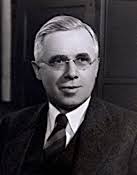Burgess, Ernest Watson

Bio: (1886-1966) Canadian-American sociologist. Ernest Burgess received his doctorate from, and later taught at the University of Chicago. Together with his colleague from the University of Chicago, Robert Park, he published the textbook of sociology Introduction to the Science of Sociology (1921), which became the most famous sociology textbook of that time. The two sociologists continued their cooperation and a few years later published the book The City (1925), which is one of the first and most famous works in the field of sociology of the city, the area for which Burgess is best known. Burgess and Park presented the American city as an ecological structure - a set of localized and isolated zones, each with its own category of the population. These zones often have the shape of concentric circles, so this model of urban development is known as the theory of concentric zones. There is a business zone in the center, outside it is a transition zone characterized by ghettos, slums, and crime; the next is the working-class residential area –populated by second-generation immigrants. Outside of these is the residential zone, and the last is the suburban zone. Urban zones are going through their evolution, and the main driving force of that evolution is competition. People are fighting for land and other urban resources within the city. During his career, Burgess also researched topics of crime, delinquency, and divorce. He studied the attitudes and behavior of married couples to determine the factors that affect the success of marriages. Burgess also contributed to the development of sociological methodology. In his empirical research, he applied both qualitative methods - interviews and personal statements - and statistical methods, some of which he developed. Burgess believes that it is very important for sociology to enable the prediction of phenomena, so he developed several analytical methods for that purpose.
Main works
The Function of Socialization in Social Evolution (1916);
Introduction to the Science of Sociology (1921);
The City (1925);
Predicting Success or Failure in Marriage (1939);
Aging in Western Societies (1960).

